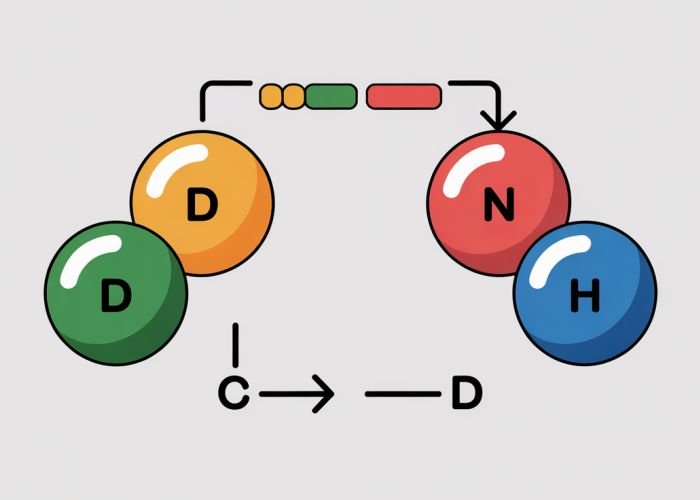Understanding electronegativity, a property often illustrated by the Pauling scale, is crucial for grasping the behavior of redox reactions. These reactions, fundamental to fields like electrochemistry, involve electron transfer; a conjugate redox pair, defined within the principles of thermodynamics, represents the oxidized and reduced species participating in such a reaction. The Gibbs free energy of these pairs dictate the spontaneity of the electron transfer.

Understanding Conjugate Redox Pairs: A Simplified Guide
Conjugate redox pairs are fundamental to understanding oxidation-reduction (redox) reactions, which are critical in various chemical and biological processes. This guide breaks down the concept simply, providing a clear understanding of their components and role in redox reactions.
What is a Redox Reaction?
Before diving into conjugate redox pairs, it’s essential to understand what redox reactions are. Redox reactions involve the transfer of electrons between chemical species. Two key processes define them:
- Oxidation: The loss of electrons by a substance. Its oxidation state increases.
- Reduction: The gain of electrons by a substance. Its oxidation state decreases.
These two processes always occur together; you can’t have oxidation without reduction, and vice versa.
Defining the Conjugate Redox Pair
A conjugate redox pair consists of two species that can be interconverted by the loss or gain of an electron. One species is the oxidized form, and the other is the reduced form. This pair is defined by a single chemical element or compound.
Oxidized and Reduced Forms
Consider a simple example:
- Oxidized Form: Fe3+ (Iron(III) ion)
- Reduced Form: Fe2+ (Iron(II) ion)
In this pair, Fe3+ can gain an electron to become Fe2+ (reduction), and Fe2+ can lose an electron to become Fe3+ (oxidation). Thus, Fe3+/Fe2+ constitutes a conjugate redox pair.
Identifying Conjugate Redox Pairs in a Reaction
Recognizing conjugate redox pairs within a redox reaction involves identifying which species are being oxidized and which are being reduced. Look for changes in oxidation states.
Steps to Identify a Conjugate Redox Pair
- Identify all species involved: List all the reactants and products in the chemical reaction.
- Determine the oxidation states: Calculate the oxidation state of each element in the reactants and products.
- Look for changes in oxidation state: Identify elements whose oxidation states change during the reaction.
- Pair the oxidized and reduced forms: Group the oxidized form and reduced form of each element that undergoes a change in oxidation state. These form the conjugate redox pairs.
Example Reaction and Analysis
Consider the following simplified reaction:
Zn(s) + Cu2+(aq) → Zn2+(aq) + Cu(s)
Let’s analyze it step-by-step:
- Species Involved: Zn(s), Cu2+(aq), Zn2+(aq), Cu(s)
- Oxidation States:
- Zn(s): 0
- Cu2+(aq): +2
- Zn2+(aq): +2
- Cu(s): 0
- Changes in Oxidation State:
- Zinc (Zn) changes from 0 to +2 (oxidation)
- Copper (Cu) changes from +2 to 0 (reduction)
- Conjugate Redox Pairs:
- Zn2+/Zn (Zinc ion/Zinc metal)
- Cu2+/Cu (Copper ion/Copper metal)
Therefore, in this reaction, the conjugate redox pairs are Zn2+/Zn and Cu2+/Cu.
The Role of Conjugate Redox Pairs as Oxidizing and Reducing Agents
Each member of a conjugate redox pair can act as either an oxidizing agent or a reducing agent, depending on the context of the reaction.
- Oxidizing Agent: The species that causes another species to be oxidized (and is itself reduced). In the Cu2+/Cu pair, Cu2+ is the oxidizing agent, as it accepts electrons.
- Reducing Agent: The species that causes another species to be reduced (and is itself oxidized). In the Zn2+/Zn pair, Zn is the reducing agent, as it donates electrons.
This interplay between oxidizing and reducing agents defines the flow of electrons in redox reactions and is fundamental to understanding electrochemistry and many biochemical processes.
Common Examples of Conjugate Redox Pairs
Many important chemical and biological systems utilize conjugate redox pairs. Here are a few notable examples:
| Conjugate Redox Pair | Oxidized Form | Reduced Form | Role |
|---|---|---|---|
| NAD+/NADH | NAD+ | NADH | Electron carrier in cellular respiration |
| FAD/FADH2 | FAD | FADH2 | Electron carrier in cellular respiration |
| Fe3+/Fe2+ | Fe3+ | Fe2+ | Iron-containing proteins, enzymes |
| O2/H2O | O2 | H2O | Final electron acceptor in aerobic respiration |
FAQs: Understanding Conjugate Redox Pairs
This FAQ section addresses common questions and clarifies key concepts about conjugate redox pairs discussed in the main article.
What exactly makes a redox pair "conjugate"?
A redox pair is conjugate because it consists of an oxidizing agent and its corresponding reducing agent. They are related by the loss or gain of electrons: one form has lost electrons (oxidized) to become the other, and vice-versa. Therefore, they’re a pair, tied together.
How are conjugate redox pairs related to oxidation and reduction?
Oxidation is the loss of electrons, and reduction is the gain of electrons. In a conjugate redox pair, the oxidized form has lost electrons (oxidation) and the reduced form has gained electrons (reduction). They participate in redox reactions together.
Can you give a simple example of a conjugate redox pair?
A classic example is Fe3+/Fe2+. Fe3+ (ferric iron) is the oxidizing agent; it can accept an electron and be reduced to Fe2+ (ferrous iron). Fe2+ is the reducing agent; it can donate an electron and be oxidized back to Fe3+. They together form a conjugate redox pair.
Why is understanding conjugate redox pairs important?
Understanding these pairs is crucial because redox reactions always involve both oxidation and reduction happening simultaneously. They are fundamental to understanding how electrons are transferred in chemical reactions, biological processes, and various industrial applications. Recognizing conjugate redox pairs help in predicting reaction outcomes.
So, there you have it – conjugate redox pairs explained (hopefully!) simply. Go forth and conquer those reactions! And hey, if you ever get stuck, just remember the basics, revisit this article, and maybe grab a coffee. You’ve got this!